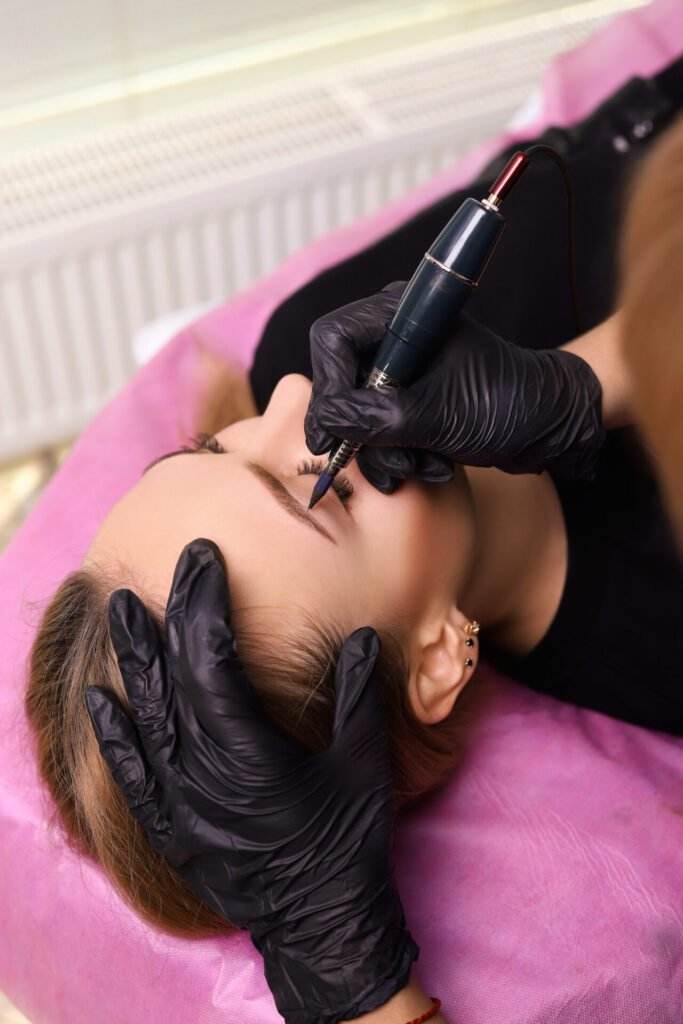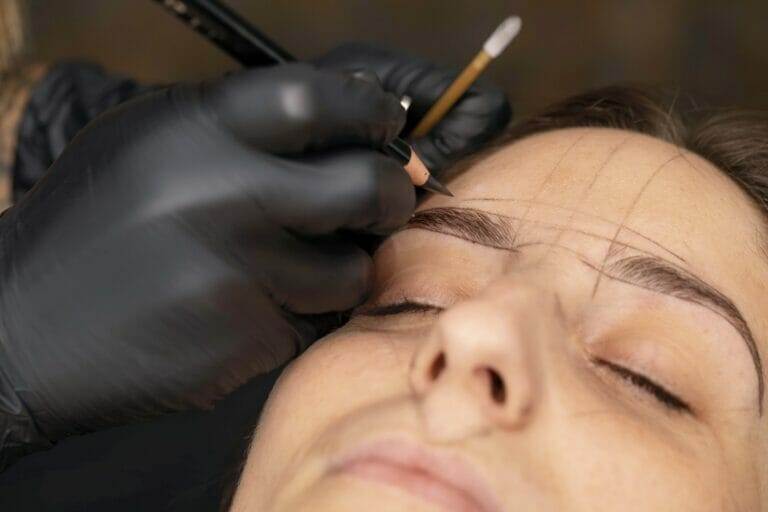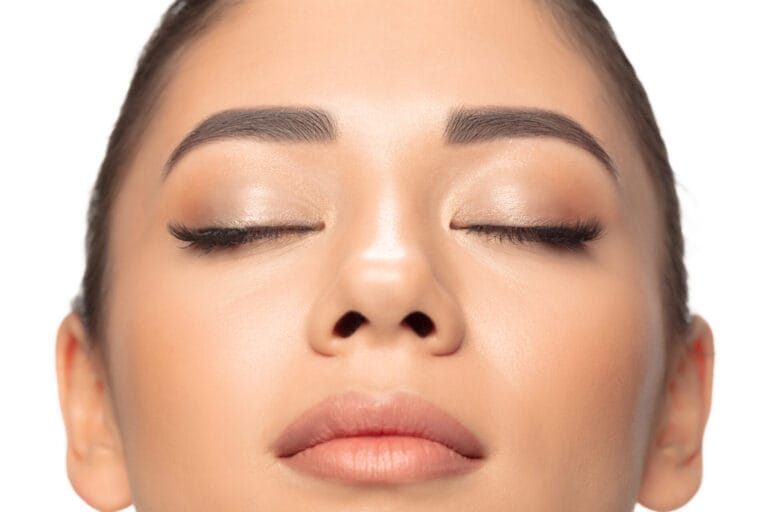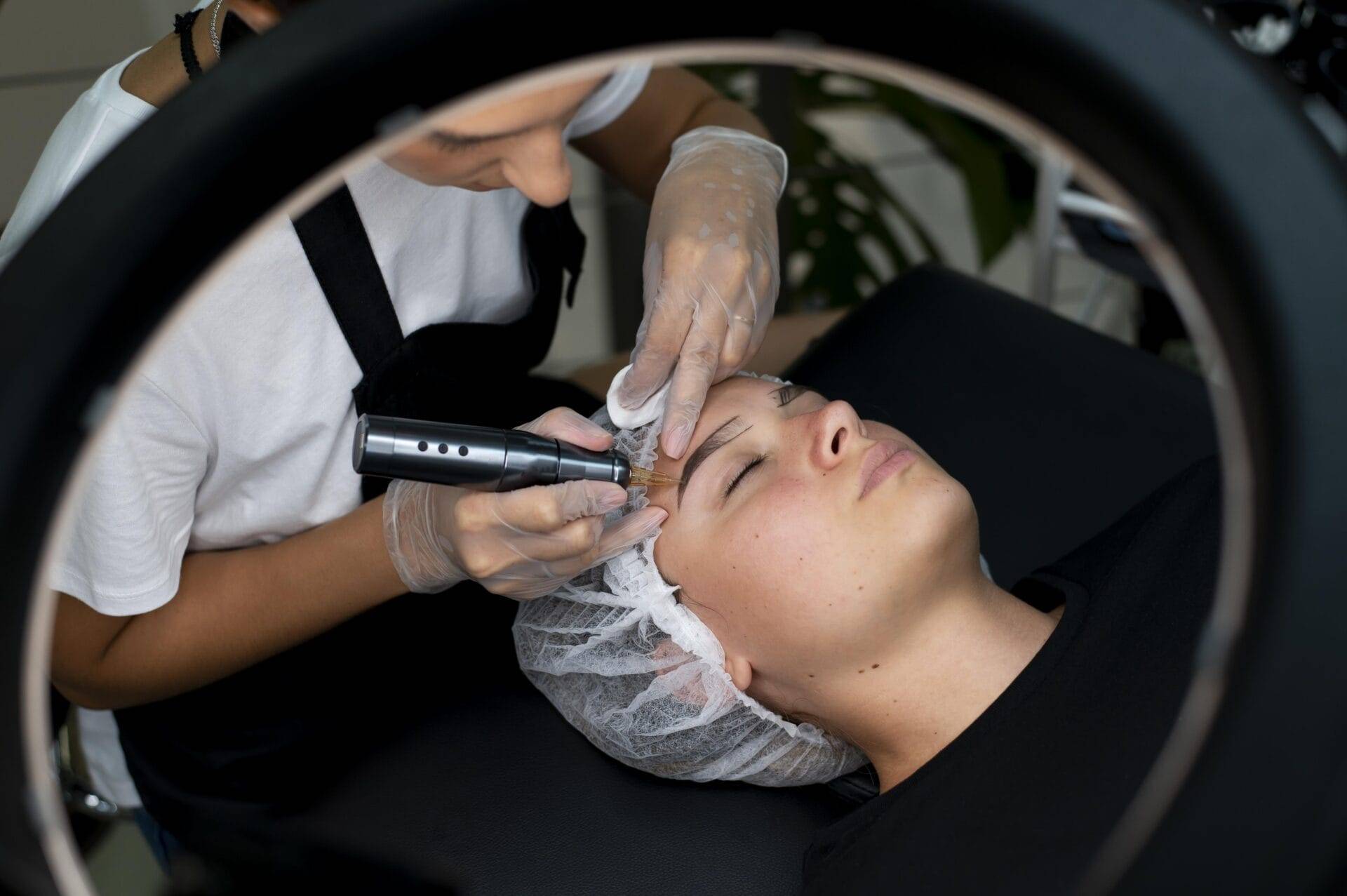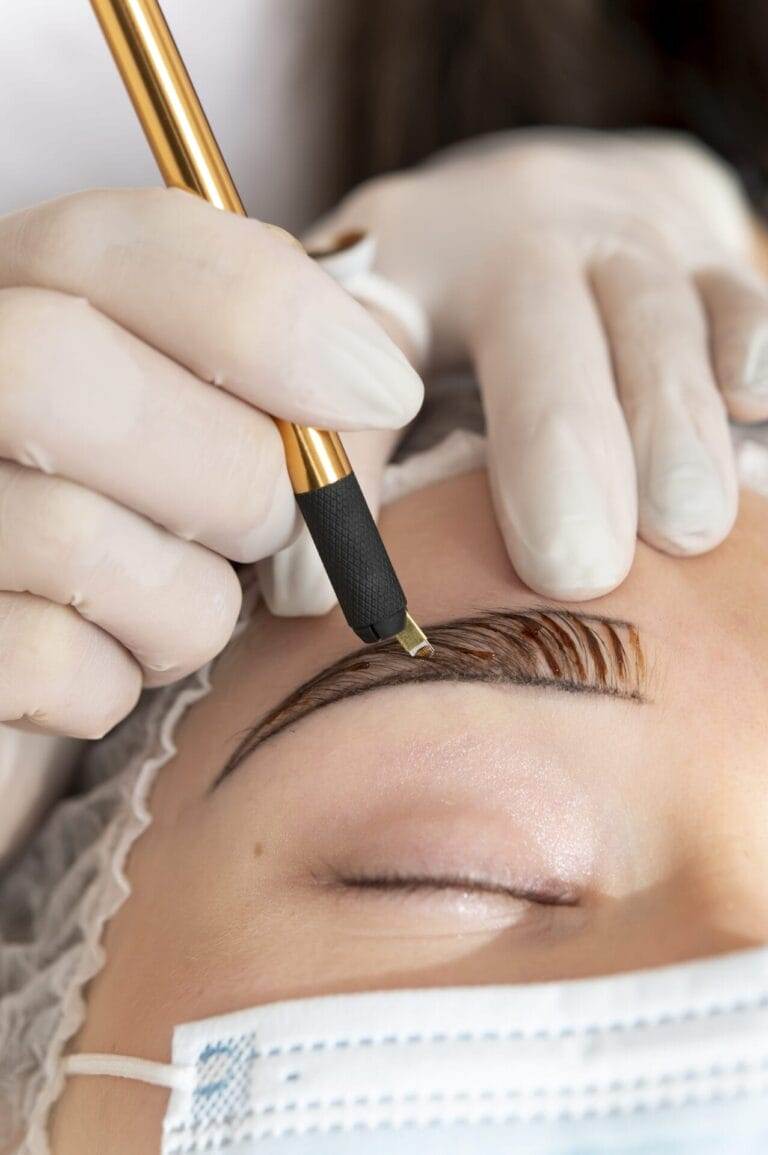Introduction
In the beauty industry, achieving the perfect eyebrows has been a quest for many, leading to the rise of various techniques like eyebrow microblading and microshading. These methods promise fuller, well-defined brows, contributing significantly to an individual’s overall facial aesthetic. This blog will explore the nuances of these two popular eyebrow enhancement techniques, highlighting their differences, processes, and results.
The Importance of Eyebrow Aesthetics
The shape and fullness of eyebrows can greatly influence facial symmetry and expression. Think about it:
- Framing the Face: Well-groomed brows can enhance facial features.
- Defining Expressions: Eyebrows play a key role in conveying emotions.
As we dive deeper into this blog, readers will gain insight into choosing the best technique tailored for their preferences and skin types.
What is Eyebrow Microblading?
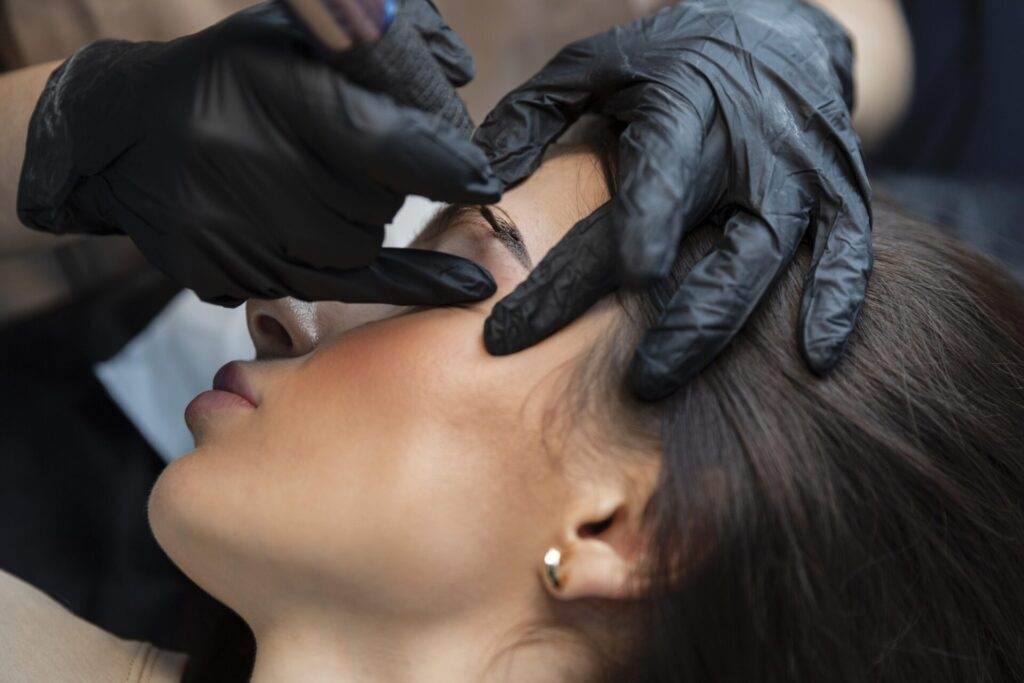
Eyebrow microblading has rapidly gained popularity among beauty enthusiasts seeking a semi-permanent solution for their eyebrow woes. This technique involves using a handheld tool to create fine, hair-like strokes that mimic natural eyebrow hairs, giving clients beautifully defined brows.
Process of Eyebrow Microblading
The microblading procedure is typically outlined in a few steps:
- Consultation: Discuss desired brow shape and color with the technician.
- Mapping: The artist maps out the ideal eyebrow shape based on your facial features.
- Numbing: A topical anesthetic is applied to minimize discomfort during the procedure.
- Hair Strokes: Using a microblade, the artist creates individual strokes, layering pigment for a natural look.
- Aftercare Instructions: Clients receive guidelines for caring for their new eyebrows during the healing process.
Pros and Cons of Eyebrow Microblading
As with any beauty treatment, microblading comes with its advantages and disadvantages. Here are some key points to consider:
Pros:
- Natural Appearance: The fine strokes look like actual hair.
- Long-lasting: Results can last from 1 to 3 years with proper care.
- Customizable: Each treatment can be tailored to individual preferences.
Cons:
- Costs: Initial investment may be higher compared to other methods.
- Maintenance: Touch-ups may be required for optimal aesthetics.
- Healing Time: Initial redness and some scabbing can occur post-procedure.
Ultimately, understanding these aspects can help individuals decide if eyebrow microblading aligns with their beauty goals.
What is Microshading?
Microshading has emerged as a popular alternative to traditional eyebrow techniques, offering a softer, more filled-in appearance. This technique employs a digital machine or manual tool to apply tiny dots of pigment, creating a powdery finish reminiscent of makeup. Microshading can beautifully enhance one’s brows, delivering a subtle, yet impactful look.

Process of Microshading
The microshading procedure is relatively straightforward and involves several key steps:
- Initial Consultation: Discuss expectations and preferred styles with the technician.
- Designing the Shape: The artist outlines the desired brow shape for balanced dimensions.
- Numbing: Local anesthesia is applied to ensure minimal discomfort.
- Pigment Application: Utilizing a microshading tool, the artist fills in the brows with tiny dots, creating a gradient effect.
- Post-Care Guidance: Clients receive specific instructions to enhance healing and maintain results.
Pros and Cons of Microshading
Like any beauty treatment, microshading has its unique benefits and drawbacks, which are essential to assess before choosing this technique.
Pros:
- Soft and Fluffy Finish: Creates a natural, powdered look perfect for daily wear.
- Long-lasting Results: Usually lasts between 1 to 3 years, depending on skin type and care.
- Less Trauma to Skin: The technique is generally less invasive than microblading.
Cons:
- Healing Time: There may be some swelling and tenderness post-procedure.
- May Not Suit All Styles: Those seeking a more defined look might find microshading less appealing.
- Potential for Color Changes: The pigment could appear lighter over time, necessitating touch-ups.
By understanding the microshading process and its pros and cons, potential clients can make informed decisions about their brow journey.
Differences in Techniques
When considering eyebrow enhancements, it’s essential to recognize the distinct differences between microblading and microshading. These variations not only affect the final look but also the overall experience of the procedure.
Stroke Patterns
One of the most notable differences lies in the stroke patterns used in each technique:
- Microblading: This method involves creating fine, hair-like strokes that mimic natural eyebrow hairs. The goal is to integrate seamlessly with the existing hairs for a more realistic appearance.
- Microshading: In contrast, microshading utilizes small dots to achieve a soft, powdered effect, creating a fuller look. The shading can vary in density, allowing for a more gradient finish that resembles makeup application.
Depth of Pigment Placement
Another key difference is the depth at which the pigment is applied:
- Microblading: The pigment is deposited into the upper layers of the skin, which allows for the fine details of hair strokes to stay vibrant and lifelike. However, this may also lead to quicker fading.
- Microshading: The pigment is layered slightly deeper, often resulting in a longer-lasting finish. This method is less invasive, which can be gentler on the skin while still achieving a full brow effect.
Understanding these differences can help individuals select the technique that best meets their aesthetic desires and lifestyle needs.
Results Comparison
When it comes to achieving the perfect eyebrow look, the results of microblading and microshading can significantly vary. Understanding these differences can guide individuals in selecting the technique that aligns with their beauty goals.
Natural Appearance of Microblading
Microblading is renowned for its ability to deliver a remarkably natural look. Some highlights include:
- Realistic Texture: The fine hair-like strokes mimic actual eyebrow hairs, creating an authentic appearance.
- Customization: Artists can tailor the shape and color to suit individual facial features, enhancing overall symmetry.
Many individuals appreciate this technique for its subtlety, allowing them to maintain their natural beauty while achieving fuller brows.
Fuller Look of Microshading
On the other hand, microshading provides a distinct shift in aesthetics. Here’s what it offers:
- Powdered Finish: The gradient effect replicates the look of makeup, giving the brows a soft, fuller appearance.
- Even Coverage: This method fills in sparse areas, creating a denser brow that frames the face beautifully.
People who prefer a bolder look may gravitate towards microshading, as it allows for versatility in styling without the daily hassle of makeup application. With these differences in results, individuals can confidently choose the eyebrow technique that best suits their desired look.
Duration and Maintenance
Understanding the duration and maintenance of eyebrow enhancement techniques is crucial for individuals considering microblading or microshading. Each method has its own longevity, and knowing what to expect ensures optimal results and satisfaction.
Longevity of Eyebrow Microblading
Microblading typically offers longevity, with results lasting anywhere from 1 to 3 years. Several factors influence this duration:
- Skin Type: Oily skin may cause faster fading than normal or dry skin.
- Aftercare: Proper aftercare significantly extends the life of microblading.
- Lifestyle: Frequent swimming or sun exposure can also impact longevity.
Clients often enjoy waking up with perfectly shaped brows for months, making microblading a popular choice for those seeking a low-maintenance beauty routine
Touch-ups Required for Microshading
While microshading offers lasting results, touch-ups are essential to maintain the appearance. Typically, clients may require a refresh every 1 to 2 years, depending on:
- Color Retention: Over time, the pigment may fade, necessitating a touch-up.
- Desired Look: For those who want to maintain a bold and filled-in appearance, regular visits to the artist are recommended.
Understanding these factors ensures that clients can keep their brows looking fresh and fabulous while enjoying the benefits of their chosen technique.
Skin Compatibility
When considering eyebrow enhancement techniques, skin compatibility plays a crucial role in achieving the best results. Both microblading and microshading have their preferred skin types, allowing individuals to choose what works best for them.
Recommended for Oily Skin Types
Microshading is often recommended for individuals with oily skin. Here’s why:
- Long-lasting Results: The deeper pigment placement can withstand oil production, maintaining the look for a more extended period.
- Soft Finish: The dotting technique helps to fill in brows without emphasizing oiliness that might show through hair strokes.
Clients with oily skin frequently find that microshading gives them the desired fullness while controlling shine effectively.
Suitable for Sensitive Skin
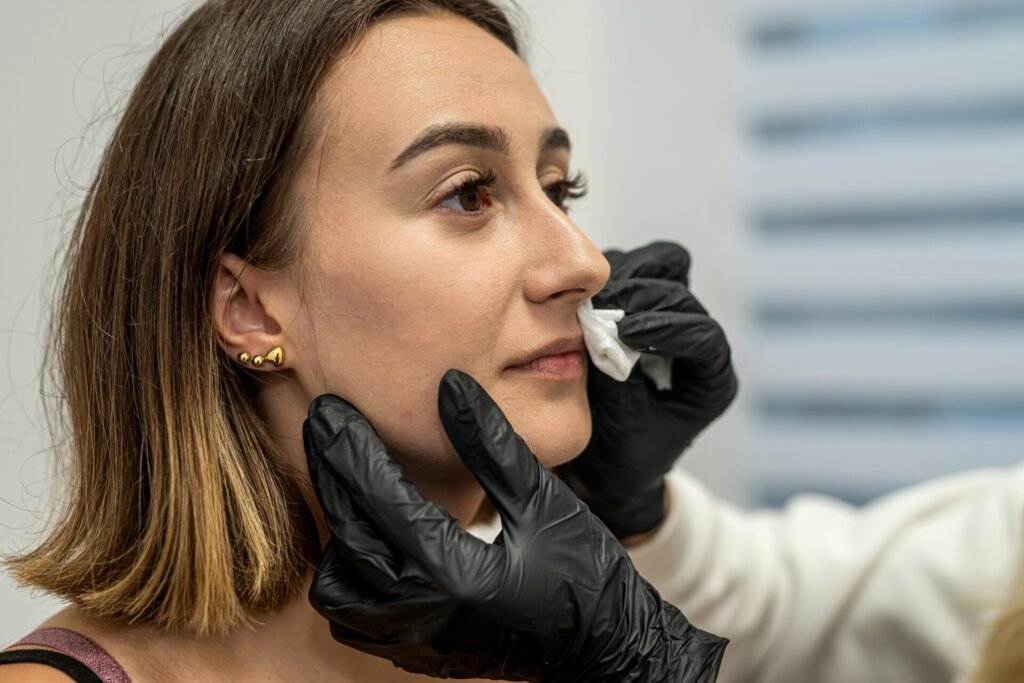
On the other hand, microblading can potentially be a better option for those with sensitive skin when done by a skilled technician. Consider the following:
- Minimal Trauma: The hand-drawn strokes are less invasive, reducing skin irritation during the procedure.
- Customizable Depth: Experienced artists can adjust how deep the strokes go, accommodating sensitive skin responses.
Ultimately, understanding skin compatibility helps individuals make informed choices, ensuring their chosen technique aligns with their unique skin needs while achieving beautiful eyebrow results.
Cost Analysis
When considering eyebrow enhancement techniques like microblading and microshading, understanding the cost involved is essential for making an informed decision. Both methods require an initial investment, but the overall expenses can differ.
Initial Investment for Microblading
Microblading typically demands a higher upfront cost due to the meticulous nature of the procedure. Clients can expect to pay approximately $400 to $800 for the initial treatment. Several factors can influence this price:
- Artist Experience: Established artists may charge more due to their skill and reputation.
- Location: Prices can vary significantly based on geographical location and market demand.
- Included Services: Some packages may offer a follow-up touch-up within a few weeks, adding value to the investment.
Overall Expenses for Microshading
Microshading, while initially less costly, also presents a distinct pricing structure. The starting price generally ranges from $300 to $700. Considerations for the total cost include:
- Follow-up Touch-ups: Regular maintenance may be needed every 1 to 2 years, adding to the total expense.
- Product Quality: Higher-quality pigments and tools can influence cost, but often yield better results and longevity.
Both techniques require careful consideration of initial and ongoing expenses. Understanding the financial commitment involved ensures that clients are prepared for their eyebrow enhancement journey while receiving the best value for their investment.
Artist Qualifications
When investing in eyebrow enhancement techniques such as microblading and microshading, the qualifications of the artist performing the procedure are paramount. It’s essential to ensure that the experts have the appropriate training and experience to deliver safe and satisfactory results.
Training for Microblading Artists
Becoming a certified microblading artist typically involves several steps:
- Comprehensive Courses: Aspiring artists often enroll in courses that cover everything from skin anatomy to color theory.
- Hands-on Practice: Many training programs include live demonstrations and supervised practice sessions, helping artists refine their skills.
- Certification: Graduates usually earn certification that demonstrates their competence and adherence to health and safety regulations.
This rigorous training ensures that microblading artists can provide natural and aesthetically pleasing results for their clients.
Expertise of Microshading Technicians
Microshading requires different skills, and technicians often pursue specialized training:
- Technique-Specific Courses: Technicians learn the intricacies of the dotting method and color blending to achieve a soft, powdered look.
- Machine Operation: Knowledge of how to use digital tools effectively is critical for achieving consistent outcomes.
- Continual Education: Many technicians participate in workshops and refresher courses to stay updated with trends and techniques.
By choosing certified professionals with proper training in their respective techniques, clients can ensure they receive safe and effective eyebrow enhancements that meet their beauty standards.
Aftercare Instructions
Proper aftercare is critical to achieving the best results after undergoing either microblading or microshading. Following the right instructions ensures that the eyebrows heal beautifully and maintain their desired appearance.
Healing Process for Microblading
After microblading, the healing process typically lasts about 10 to 14 days. During this time, clients should adhere to these guidelines:
- Avoid Water and Moisture: Keep the area dry, particularly in the first week.
- No Picking or Scratching: Resist the urge to touch or pick at the brows to avoid disrupting healing.
- Use Recommended Ointment: Apply a thin layer of aftercare ointment as prescribed by the artist.
Following these steps can minimize complications and enhance the longevity of the results.
Post-Procedure Care for Microshading
Similarly, after microshading, clients should follow specific care routines to ensure proper healing:
- Gentle Cleansing: Use a mild, non-alcoholic cleanser to keep the area clean, avoiding excessive scrubbing.
- Limit Sun Exposure: Protect the brows from direct sunlight to prevent fading.
- Moisturizing: Apply a suggested moisturizer to maintain hydration without over-saturating the area.
By adhering to these aftercare instructions, clients can support their healing process and enjoy beautifully enhanced eyebrows for months to come.
Reviews from Microshading Recipients
Similarly, reviews from microshading recipients emphasize different benefits:
- Softer Appearance: Clients often appreciate the more diffused look that microshading offers, describing it as effortlessly chic.
- Customization: Several reviews commend their technicians for personalizing shapes and colors based on their preferences.
- Longevity: Many appreciate the enduring quality of the results, allowing them to enjoy a polished look for an extended period without daily makeup.
Overall, the testimonials and reviews reflect high satisfaction levels among clients for both techniques, reinforcing the value of investing in professional eyebrow enhancements.
Consultation and Decision-making
Before committing to an eyebrow enhancement technique, both microblading and microshading require careful consideration and a thorough consultation. This process is vital for ensuring that clients make informed choices aligned with their aesthetic goals.
Pre-Procedure Consultation for Microblading
During a microblading consultation, clients can expect to discuss:
- Desired Look: Artists typically assess preferences regarding shape, color, and overall style to ensure the end results meet expectations.
- Skin Type Assessment: Understanding the client’s skin type helps determine the best approach to microblading for optimal results.
- Health History: Discussing any previous medical conditions or sensitivities is essential for assessing candidacy.
This step creates a solid foundation for a successful treatment experience.
Factors to Consider Before Opting for Microshading
Before choosing microshading, clients should take into account several key factors:
- Lifestyle: Consider how often they want to maintain their brows; microshading requires ongoing touch-ups every 1 to 2 years.
- Desired Aesthetic: Determine whether they prefer a softer, makeup-like finish, which microshading provides, compared to a more defined look from microblading.
- Skin Compatibility: Understanding personal skin type can help ensure that microshading is a suitable option for achieving the best results.
By carefully evaluating these considerations and engaging in detailed consultations, clients can confidently select the eyebrow enhancement technique that best fits their lifestyle and beauty desires.
Popularity of Eyebrow Microblading
Microblading has solidified its place as a staple in the beauty routine for many. Its popularity can be attributed to:
- Natural-Looking Results: Clients love the realistic and defined appearance of hair-like strokes.
- Longevity: The semi-permanent nature and the low-maintenance aspect appeal to those with busy lifestyles.
- Social Media Influence: Numerous influencers showcase their results, fueling its desirability among beauty enthusiasts.
This enduring popularity ensures that microblading remains a sought-after choice for enhancing brows.
Emerging Trend of Microshading
While microblading continues to thrive, microshading is quickly gaining traction as an emerging trend. Factors contributing to its rise include:
- Soft, Makeup-Like Finish: Many clients are drawn to the diffused look that resembles makeup application, appealing to those who prefer a fluffier brow.
- Versatility: Microshading can complement various brow shapes and styles, making it an attractive option for a broader audience.
- Quick Insights from Experience: As more clients share their positive experiences, word-of-mouth recommendations are boosting its popularity.
With ongoing trends and preferences, both microblading and microshading will likely continue to shape the future of eyebrow aesthetics, offering options that cater to diverse beauty goals.
Conclusion
As we conclude our exploration of eyebrow enhancement techniques, it’s evident that both microblading and microshading cater to various aesthetic desires and individual preferences. Each method offers unique benefits, from the natural look of microblading to the soft, flushed appearance of microshading.
By understanding these aspects, individuals can make confident decisions that align with their beauty goals and enhance their overall aesthetic. Whether opting for microblading or microshading, clients can enjoy beautifully defined brows that boost their confidence and complement their unique features.

